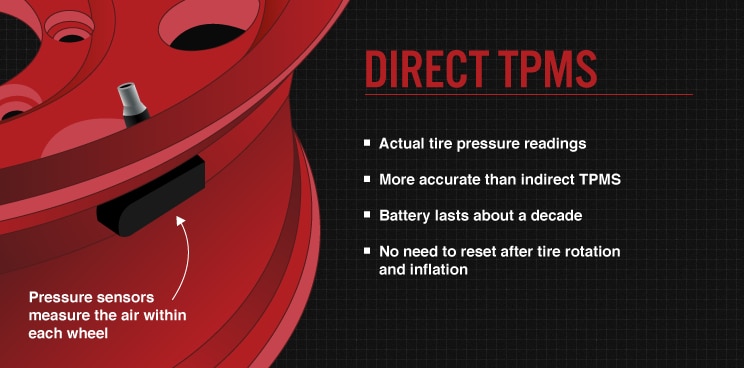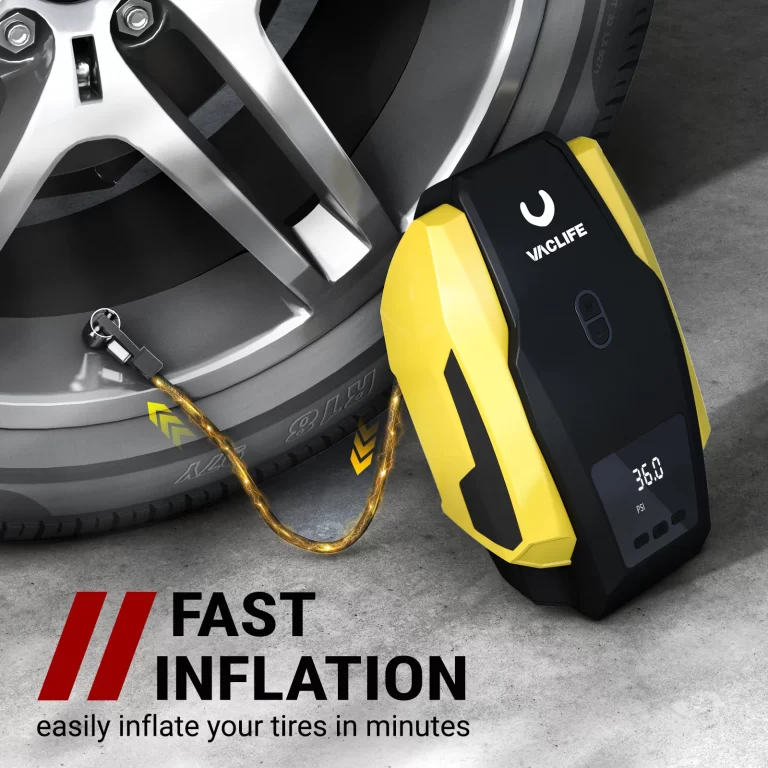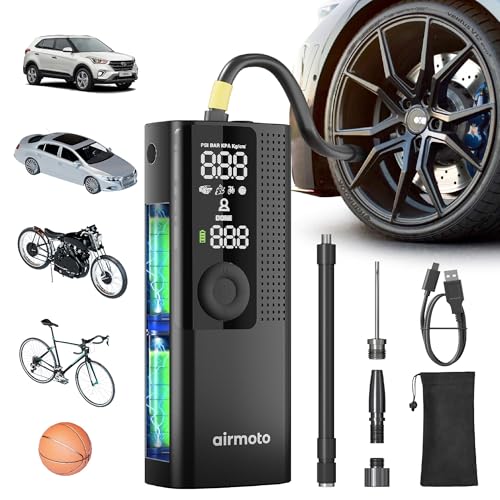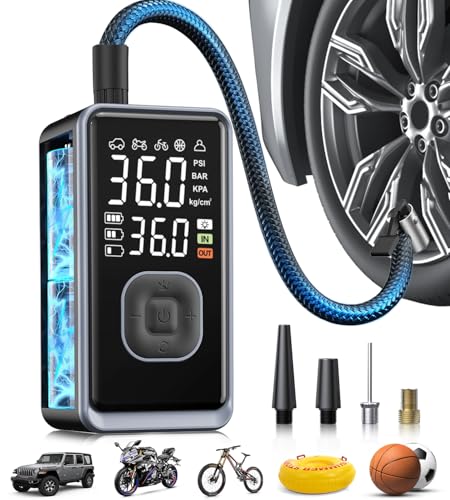How Do Tire Inflation Sensors Work: Unveiling the Tech
Tire inflation sensors are important tools for vehicle safety. They help drivers know if their tires are properly inflated. Proper tire inflation ensures better fuel efficiency and safer driving. In this article, we will explore how these sensors work.
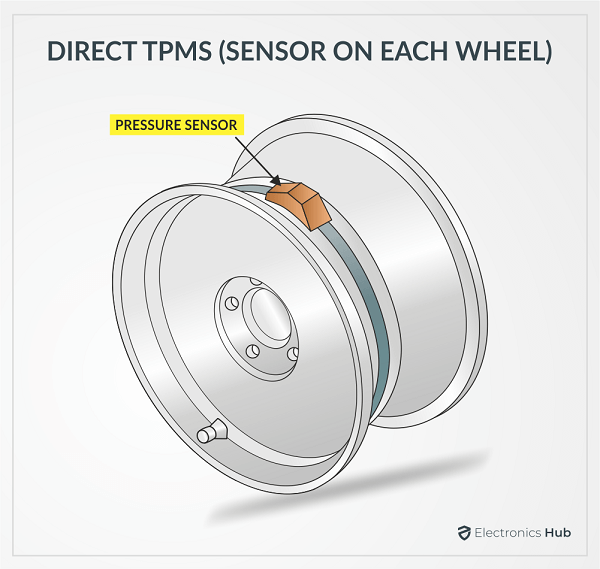
What Are Tire Inflation Sensors?
Tire inflation sensors, also known as Tire Pressure Monitoring Systems (TPMS), monitor tire pressure. They alert drivers when tire pressure is too low. There are two main types of TPMS:
- Direct TPMS: This type uses sensors inside each tire.
- Indirect TPMS: This type uses the vehicle’s ABS system to measure tire pressure indirectly.
How Do Direct TPMS Work?
Direct TPMS uses sensors mounted on each tire’s valve stem. These sensors measure the air pressure inside the tire. They send this information to the car’s computer system. If the pressure is too low, the system triggers a warning light on the dashboard.
Components Of Direct Tpms
Direct TPMS consists of several key components:
- Pressure Sensors: Measure tire pressure and temperature.
- Receiver: Collects data from the sensors.
- Dashboard Indicator: Displays warnings to the driver.
How Sensors Measure Pressure
The sensors use a small battery to operate. They measure the air pressure using a piezoelectric sensor. This type of sensor generates an electrical charge when pressure is applied. The higher the pressure, the more charge is produced.
Data Transmission
The sensors send data wirelessly to the car’s computer. This happens every few seconds. If the pressure drops below a certain level, the system sends an alert. This helps drivers take action before a problem occurs.
How Do Indirect TPMS Work?
Indirect TPMS does not use sensors inside the tires. Instead, it relies on the vehicle’s ABS. The system monitors the speed of each tire. If one tire is under-inflated, it will rotate at a different speed than the others.
Components Of Indirect Tpms
Indirect TPMS also has important components:
- ABS Module: Monitors tire speed using wheel sensors.
- Vehicle Computer: Analyzes data from the ABS module.
- Dashboard Indicator: Displays warnings to the driver.
How Speed Monitoring Works
The ABS module checks the speed of each tire. If one tire spins faster, it may be under-inflated. The system calculates the difference in speed. If the difference is significant, it triggers a warning.
Benefits of Tire Inflation Sensors
Tire inflation sensors offer many benefits:
- Improved Safety: Properly inflated tires reduce the risk of blowouts.
- Better Fuel Efficiency: Correct tire pressure enhances fuel economy.
- Longer Tire Life: Proper inflation extends tire lifespan.
- Enhanced Performance: Well-inflated tires provide better handling.
Why Tire Pressure Matters
Maintaining correct tire pressure is crucial. Low tire pressure can lead to various problems:
- Increased Wear: Under-inflated tires wear out faster.
- Poor Handling: Low pressure affects vehicle control.
- Higher Fuel Costs: Poorly inflated tires consume more fuel.
- Risk of Accidents: Low pressure increases the chance of accidents.
How to Check Tire Pressure
It is important to regularly check tire pressure. Here are simple steps to do it:
- Get a tire pressure gauge.
- Remove the valve stem cap from the tire.
- Press the gauge onto the valve stem.
- Read the pressure on the gauge.
- Compare it to the recommended pressure.
- If needed, inflate the tire using an air compressor.
When to Replace Tire Pressure Sensors
Tire pressure sensors can fail over time. Here are signs you need to replace them:
- Warning Light Stays On: If the light stays on, it may indicate a problem.
- Inaccurate Readings: If the readings seem wrong, check the sensors.
- Battery Life: Most sensors have a battery life of 5-10 years.
Frequently Asked Questions
What Are Tire Inflation Sensors?
Tire inflation sensors monitor tire pressure and send data to the vehicle’s computer for safety and performance.
How Do Tire Pressure Sensors Work?
They utilize pressure-sensitive mechanisms to detect tire pressure changes and relay this information wirelessly.
Why Are Tire Inflation Sensors Important?
These sensors enhance safety by alerting drivers to low tire pressure, reducing the risk of blowouts and improving fuel efficiency.
Can I Replace Tire Inflation Sensors Myself?
Replacing tire inflation sensors often requires specialized tools and knowledge, so professional help is recommended.
Conclusion
Tire inflation sensors play a vital role in vehicle safety. They help ensure that tires are properly inflated. This leads to better performance and safety on the road. By understanding how these sensors work, drivers can maintain their vehicles better.
Regularly checking tire pressure and maintaining sensors can save lives. It also keeps tires in good condition. Remember, safety should always come first when driving.
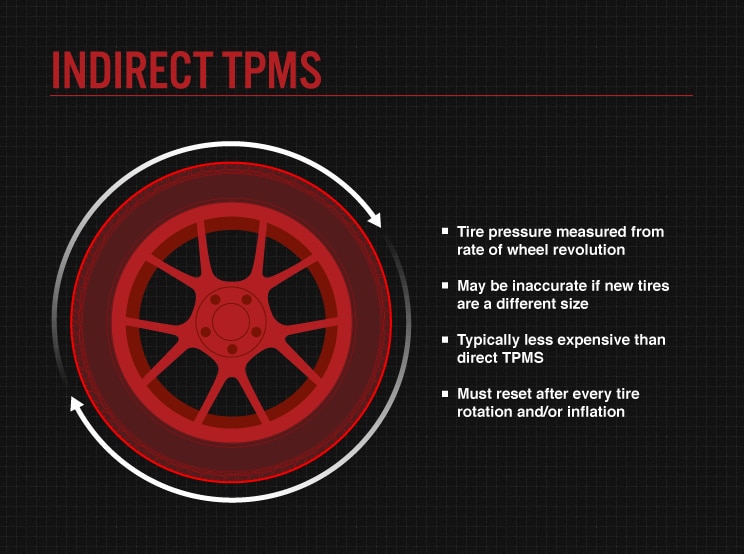
FAQs
1. How Often Should I Check My Tire Pressure?
It’s best to check tire pressure at least once a month.
2. Can I Drive With A Low Tire Pressure Warning?
It’s not safe to drive with low tire pressure. Check your tires immediately.
3. Do All Vehicles Have Tire Inflation Sensors?
Most modern vehicles come with TPMS. However, some older vehicles may not.
4. How Do I Know The Right Tire Pressure For My Vehicle?
The recommended tire pressure is usually found on a sticker inside the driver’s door.
5. What Should I Do If My Tire Pressure Sensor Is Broken?
Take your vehicle to a mechanic to have the sensor checked or replaced.

